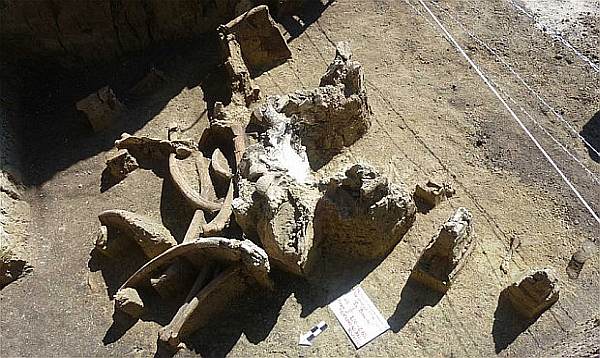Atotonilco de Tula, Hidalgo, Mexico - While digging to build a waste water treatment plant north of Mexico City, workers have discovered hundreds of bones belonging to ice age animals, including Mammoths, Mastodons and Glyptodons, the armadillo's ancestor.
According to Mexico's National Institute of Anthropology and History, tusks, skulls, jawbones, horns, ribs, vertebrae, and shells were discovered 65 feet deep in Atotonilco de Tula, a town in the state of Hidalgo, as workers built a drain.
The bones could be between 10,000 and 12,000 years old and may include a human tooth from the late Pleistocene period, the institute said.
Though remains of mammoths have been found in the past, archaeologists are dubbing it as the largest discovery of the Ice Age’s large-bodied animal remains ever made in the region by far.
Archaeologist Alicia Bonfil Olivera said that it is also the most varied discovery of extinct Megafauna found together in the Mexico basin, adding that it took about 5 months of excavation work to dig out all the remains, some of which have not yet been identified.
Apparently, archaeologists have also found a few human skeletal remains at the excavation site but scientific investigation for confirmation is yet to be done. However, two stone tools found in the excavation suggest that the bones may be that of a human.
"The characteristics and size of some bones indicate that it is human limbs, which is not surprising because it is known that the man lived in central Mexico at that time," Bonfil Olivera said.
The sediments and sand layer in which the faunal remains were found further indicate that the animals and possibly humans probably were trapped in landslides and were buried in the debris.
Source: Agence France-Presse


